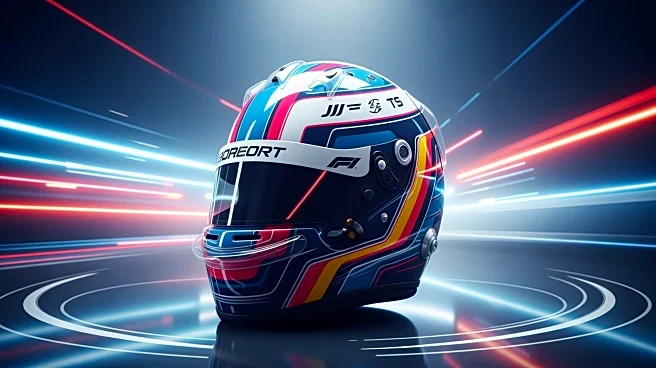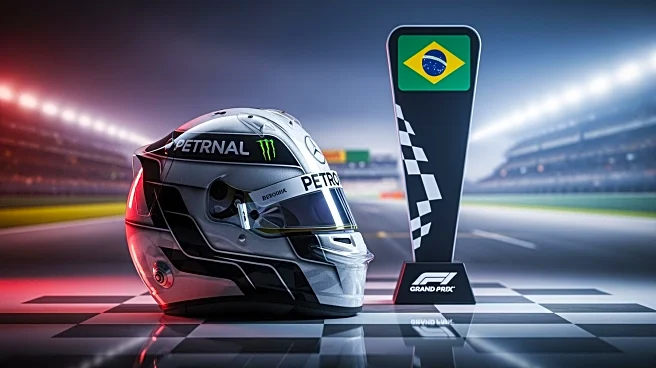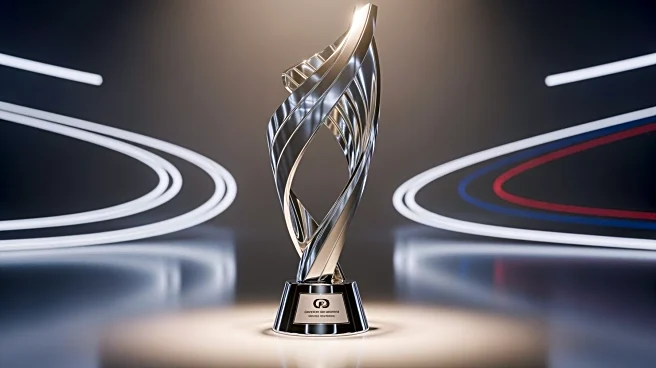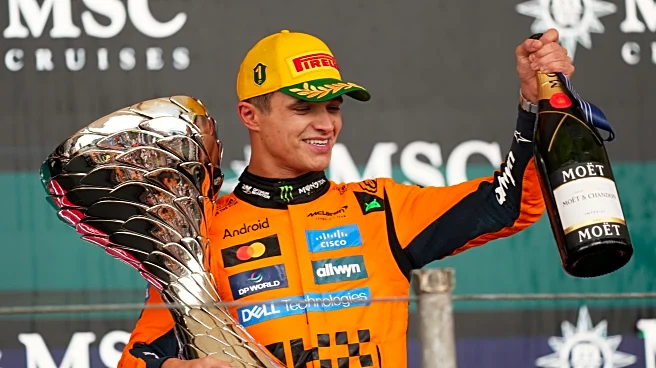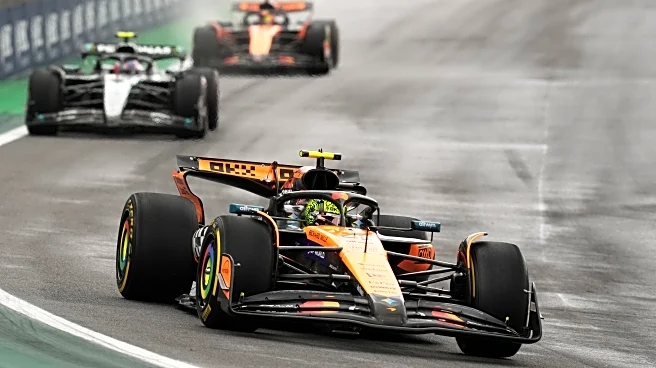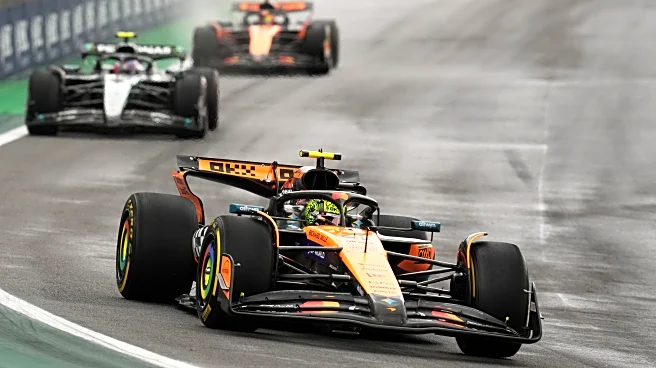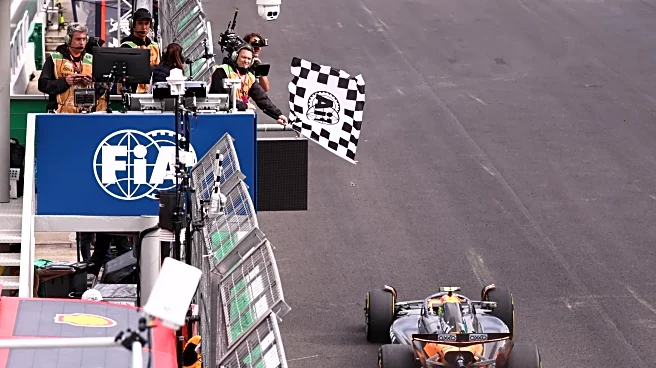What's Happening?
Lando Norris claimed victory at the Sao Paulo Grand Prix, extending his lead in the Formula 1 championship standings. Starting from pole position, Norris secured his first win at Interlagos, with Mercedes'
Kimi Antonelli finishing second and Red Bull's Max Verstappen third. Norris now leads the championship with 390 points, 24 points ahead of teammate Oscar Piastri, who finished fifth after receiving a penalty for a collision with Antonelli. The race was marked by Verstappen's impressive recovery from a pit lane start to a podium finish, showcasing his skill and determination.
Why It's Important?
Norris' victory strengthens his position in the championship race, highlighting his ability to perform under pressure and respond to criticism. The win also underscores the competitive dynamics within McLaren, as Norris and Piastri continue to battle for the title. Verstappen's performance, despite starting from the pit lane, demonstrates his resilience and potential to influence the championship outcome. The race results have significant implications for the remaining races, with Norris now in a strong position to secure his first championship title.
What's Next?
The upcoming Las Vegas Grand Prix will be crucial for Norris as he seeks to maintain his lead and secure the championship. Piastri will need to strategize effectively to close the gap, while Verstappen remains a potential contender despite his current standings. The internal competition within McLaren will continue to shape team strategies and race dynamics, influencing the championship race. Norris' ability to handle pressure and deliver consistent results will be key as the season nears its conclusion.
Beyond the Headlines
Norris' journey to the top of the standings reflects broader themes of resilience and overcoming adversity. His ability to silence critics and focus on performance serves as a testament to the mental fortitude required in high-stakes sports. The narrative surrounding Norris' championship bid also highlights the role of media and public perception in shaping athlete experiences, with implications for how drivers manage external pressures.


